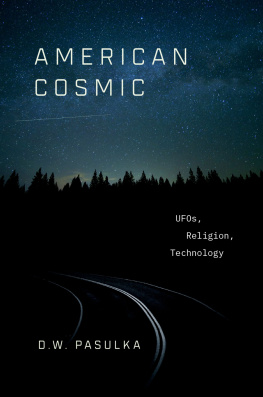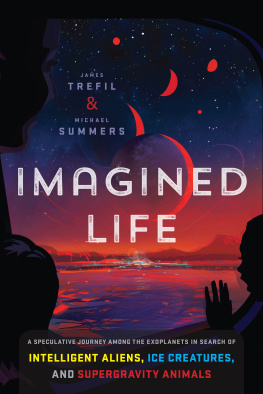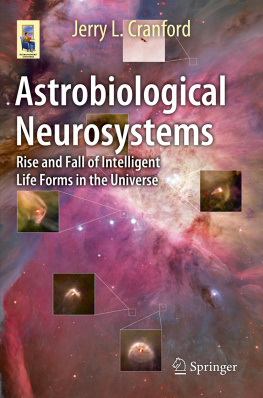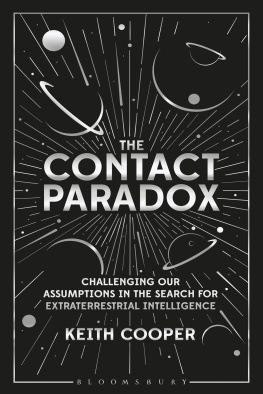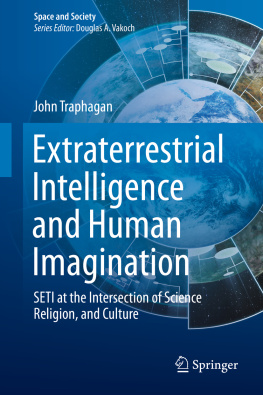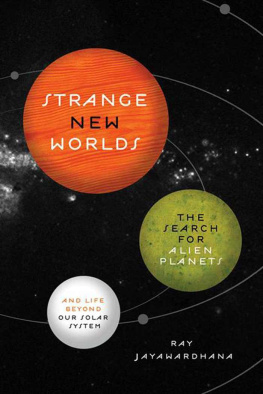The belief in the existence of extraterrestrial civilizations starts from the so-called principle of mediocrity. This principle postulates that Earth is a normal planet that rotates around a normal star, which in turn is located in a normal galaxy. That is to say, there is nothing so special in our world as to make it unique. This is a logical conclusion, toward which we are guided by the successive Copernican turns that science has suffered throughout its long history, and which has removed us from the central position we once believed to occupy in the universe.
We have come to recognize that both our star, the Sun, and our galaxy, the Milky Way, are typical examples, similar in all ways to those other millions of space objects we have observed with our telescopes, and there seems to be nothing special in them. All this leads us to think that our planet and our Solar System must also be typical examples of the planetary fauna, though knowledge of other solar systems (containing the so-called extrasolar planets or exoplanets) has just begun to be acquired. If this is true, if our world is an common example in the universe, there should logically exist a good quantity of inhabited planets, a fraction of which will contain intelligent beings and civilizations. This is the basic argument to back up the work of all the scientists who actively search for signs of extraterrestrial civilizations.
The majority of the scientific community agrees with the principle of mediocrity, for whenever we have believed ours was a special case, we have painfully come to discover that we were wrong. So it seems a useful guide. But are Earth and the Solar System actually representative cases?
A Normal Solar System
According to what scientists know today, the rocky worlds, such as planets or giant natural satellites, constitute an indispensable link in the string of cosmic events leading to life. These bodies are big and stable enough for the chemical elements present to interact in high concentrations, resulting in a variety of interesting chemical reactions. Therefore, if we can learn how common these worlds are in the universe, we can also better measure the possibility of life in other corners of the cosmos. But to make an estimation of something unknown with a reasonable chance of success, we must start from the cases we already know about.
What do scientists know today concerning the origin of our Solar System? A long, long time ago, in a dark corner of our galaxy, there was a huge mass made up of dust and gas, an immense cloud, which actually was a fragment of a much bigger cloud, a nebula, that contained the mass of hundreds of thousands of suns. Its temperature was about 260C, only a few degrees above the lowest temperature possible. It was mainly composed of hydrogen and helium, and a miniscule quantity of dust and soot. But its density was so low that in a cubic centimeter there were barely a thousand particles. For us, this practically constitutes a vacuum. In comparison, the air we breathe on a daily basis contains almost 27 trillion molecules per cm3.
The cloud was very similar to the great nebula of Orion, the muse of so many astrophotography fans. There are many similar ones in our own galaxy, but the gigantic nebula we are talking about here does not exist any longer. It disappeared some 5,000 million years ago, completely consumed in the birth of thousands and thousands of stars. One of those stars was our Sun, formed by one of the minor sections of the nebula, one out of the 200,000 million stars in our galaxy.
Although at the beginning of their birth these sister stars were located near each other, as we see in the close cumulus of the stars making up the Pleiades, today they wander along and across the galaxy, due to the galactic tidal forces that totally disaggregated the cumulus. Regrettably, today it is hardly possible to know which of all the stars we see are the sisters of our Sun.
Hence, when we observe the great nebula of Orion or the cumulus of the Pleiades, we are watching the replay of a process similar to the formation of our own Solar System. But how was the change produced from the previously described panorama? How does a beautiful and cold fragment of nebula, a mass of gas and interstellar dust residing in a dark void within the galaxy, become a brilliant star surrounded by planets?
The answer is gravity, the great motor of any change in the history of the universe. Were it not for gravity, these gigantic interstellar clouds would still be only clouds, which later would disaggregate to the end, forming only a remnant gas layer uniformly covering the galaxy, as occurs with a puff of smoke released into a large room. Nevertheless, gravity made this fragment of the nebula start to collapse in on itself, thanks to its own mass.
Once the gravitational collapse phase started, there was no going back in the evolution of the Solar System. Step by step the contracting fragment became spherical. In its central and densest part, the cloud of gas and dust began to rotate, and due to the conservation of angular momentum law, the more it shrank, the higher became the rotational speed. Because of centrifugal force, this central area of the original nebula eventually became a flat disk in which future planets would form.
However, from a great distance there would not have been much that could be seen. The remaining materials covering the region were dense and opaque enough to conceal what was happening inside. Only the heat emission in the form of infrared radiation could escape. At the same time gravity kept on with its work; the center of the cloud continued to shrink, getting more and more dense and increasing in temperature. When it reached 10,000 million degrees, the fire of nuclear fusion started, and a star emerged the Sun, its light suddenly illuminating the immense disk of gas and dust around it.
The planets of the Solar System began to form later from this circumstellar disk, through the process of gravitational accretion. The dust particles in this disk played a crucial role. They had a denser mass than the gas molecules, and therefore they exerted a greater force of gravity. Attracted to each other, little by little the tiny particles came together to form bigger particles, with a bigger mass and thus stronger gravity, which attracted other particles, generating a chain process. This led to the formation first of small-sized objects, called planetesimals, and later, as these planetesimals united, to the formation of various huge massive spheres, called protoplanets. Finally, these protoplanets accreted the remaining mass of the matter of the disk.
With time, the disk was almost cleared, all of its material transformed into a series of planets and their satellites rotating around the Sun. Far from being an easy process, this was very violent. When the primitive planets, still very hot, attracted such wastes adrift in the Solar System, these did not gently land on the surface of the planet but impacted violently into it. Earths Moon seems to have originated as a result of the collision of a gigantic object with Earth. In fact, this period in which the Solar System had just been configured is commonly known as the Great Bombardment. It ended some 3,800 million years ago, and most of the craters we find on Solar System bodies today come from that period (Fig. ).






